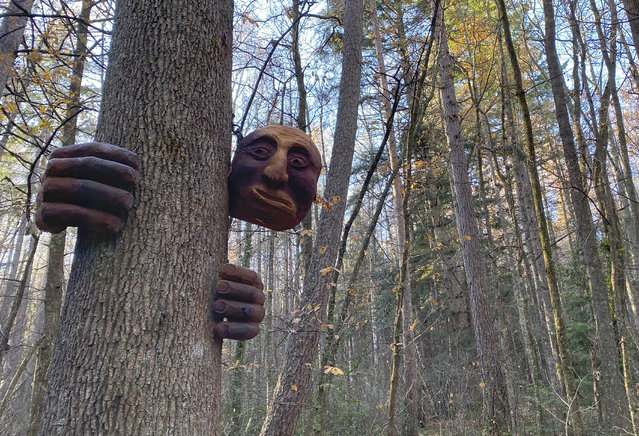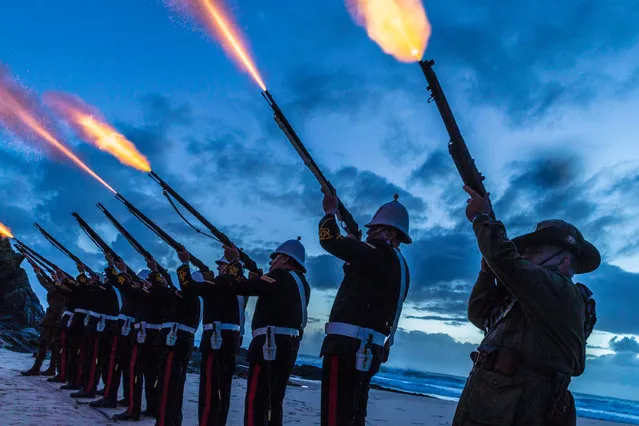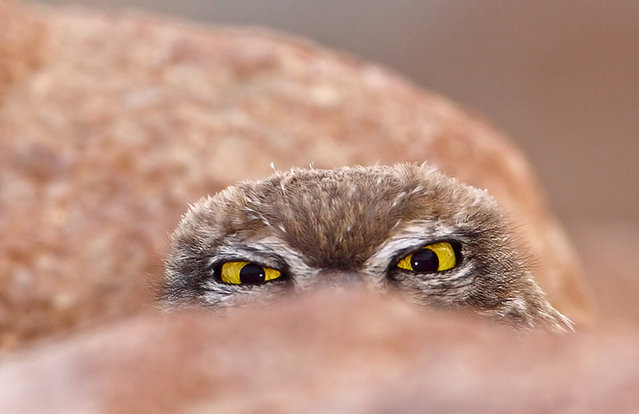
A “friendly giant” sculpture hangs from a tree in the Hanmer Heritage Forest at Hammer Springs, New Zealand, Sunday, June 14, 2020. Christchurch sculptor Andrew Lyons created the creatures out of a redwood tree that had to be removed from nearby Hanmer Springs Thermal Pools and Spa in 2018 and carved nine sculptures including big friendly giant, some enormous mushrooms, a falcon, and a dog. (Photo by Mark Baker/AP Photo)






